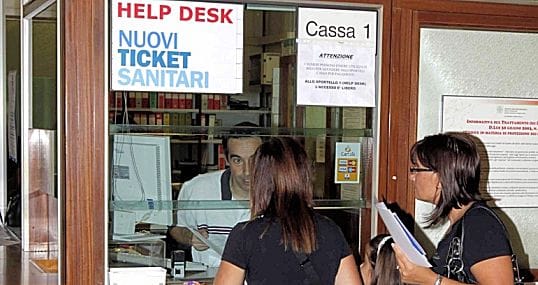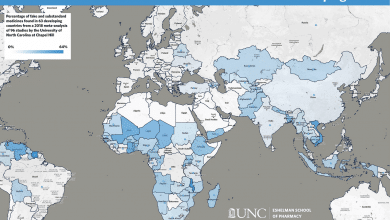
Healthcare, "costs for citizens have boomed in the last six years, but the quality and quantity of services have decreased"
The data from the 2016 Hospitals & Health report, prepared by the research company Ermeneia in collaboration with the Italian private hospital association, show that despite the spending review there are still pockets of inefficiency worth up to 3.2 billion. Result: patients turn to private facilities, move to other regions or are forced to give up treatment
by Fiorina Capozzi | January 12, 2017 | Daily fact
 Tickets for healthcare services grew by 40.6% between 2009 and 2015. Those for medicines by 76.7%, while the costs for paid visits to public hospitals rose by 21.9 percent. Nonetheless, the quality and quantity of public health has deteriorated, while pockets of inefficiency persist on the spending front, which could be worth up to 3.2 billion. Mainly due to the opacity of the financial statements of hospitals and directly managed hospitals. After a five-year spending review, this is the picture of the Italian healthcare system, outlined in the 14th annual report Ospedali & Salute 2016 by the research company Ermeneia in collaboration with the Italian private hospital association. The report recounts the double damage for citizens who, in addition to the increase in costs, also suffer the progressive deterioration of public health which has seen a reduction in beds (-9.2%), hospitalizations (-18.3%), days of hospitalization (-14%) and personal (-9%). “All of this has prompted patients to seek alternative solutions in private, accredited and non-accredited facilities; to resort to hospital structures present in other regions than that of residence; even postponing or giving up treatment”, specifies the survey, which highlighted how in the three-year period 2012-2014 Italian health expenditure compared to gross domestic product (6.8%) was lower than that of the other G7 countries (8, 2%).
Tickets for healthcare services grew by 40.6% between 2009 and 2015. Those for medicines by 76.7%, while the costs for paid visits to public hospitals rose by 21.9 percent. Nonetheless, the quality and quantity of public health has deteriorated, while pockets of inefficiency persist on the spending front, which could be worth up to 3.2 billion. Mainly due to the opacity of the financial statements of hospitals and directly managed hospitals. After a five-year spending review, this is the picture of the Italian healthcare system, outlined in the 14th annual report Ospedali & Salute 2016 by the research company Ermeneia in collaboration with the Italian private hospital association. The report recounts the double damage for citizens who, in addition to the increase in costs, also suffer the progressive deterioration of public health which has seen a reduction in beds (-9.2%), hospitalizations (-18.3%), days of hospitalization (-14%) and personal (-9%). “All of this has prompted patients to seek alternative solutions in private, accredited and non-accredited facilities; to resort to hospital structures present in other regions than that of residence; even postponing or giving up treatment”, specifies the survey, which highlighted how in the three-year period 2012-2014 Italian health expenditure compared to gross domestic product (6.8%) was lower than that of the other G7 countries (8, 2%).
But the worst is that the number of Italians who are unable to get treatment is also growing: according to Ermeneia, in 2016 16.2% of families actually "postponed one or more treatments (a phenomenon that involved between 4 and 8 million people)" . On the other hand, 10.9% of families gave up treatment for a total of 2.7-5.4 million people concerned. For the research company chaired by Nadio Delai, the data in question describe a clear case of "supply rationing deflation" as a result of a spending review, which focused on a reduction in costs capable of involving even the contracted healthcare already stressed by the delays in payments of the public administration . However "after years of cuts and contraction in the growth of the entire healthcare system, this year for the first time we glimpsed some signs of a trend reversal - explains Gabriele Pelissero, president of the Italian Private Hospital Association - there are still cumbersome boulders to delete, such as trying to  severely limit interregional mobility and consequently the patient's right to freely choose the place of treatment". In short, the road to take to defend the right to health enshrined in the Constitution is decidedly long and must take into account the "conditions that we live in today and that we will live in tomorrow", as Pellissero points out.
severely limit interregional mobility and consequently the patient's right to freely choose the place of treatment". In short, the road to take to defend the right to health enshrined in the Constitution is decidedly long and must take into account the "conditions that we live in today and that we will live in tomorrow", as Pellissero points out.
However, already today, within the national health system there are still resources to be "released" to improve the service to citizens. Ermeneia identified them in the 2.6-3.2 billion extra revenues in 2015 of the 84 hospitals and 360 directly managed hospitals. In essence, these are revenues which, in terms of the law, are only estimated within the budgets and which represent the counterpart for the so-called "functional activities", i.e. welfare activities such as first aid or intensive care for which no there is a default rate (DRG). According to the study, excess revenues are "sometimes too large forms of recognition of 'improper' revenues which, as such, would inevitably contribute to the implicit settlement of losses" of hospitals and hospitals. It is in those numbers that essential resources could therefore be hidden for an "extraordinary maintenance" of public health that will "increase the ability of hospital structures to 'do more and better with less'". The high road? “Greater transparency of the budgets which would help to measure the level of efficiency of the various structures”. And it would thus help to eliminate the pockets of inefficiency in healthcare spending which, despite the years of spending reviews, still lurk in the folds of the budgets of hospitals and hospitals.
Related news: AIOP extension. Summary of the 13th Annual Report "Hospitals & Health/2015"





